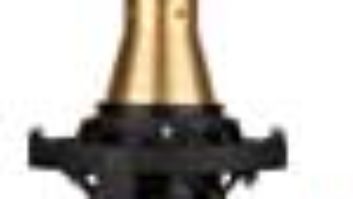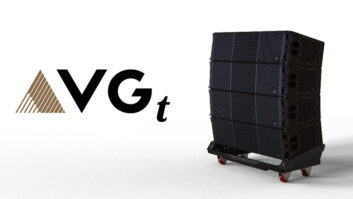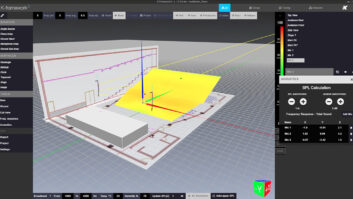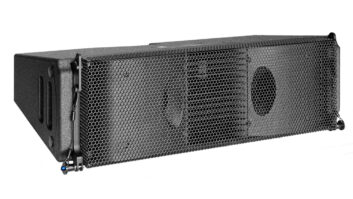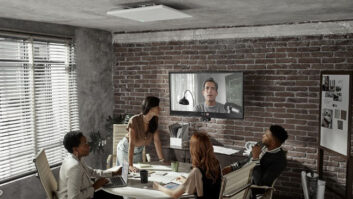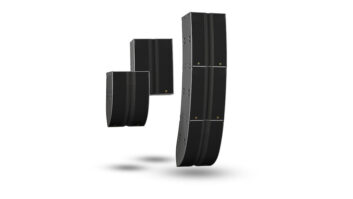When “flying” a Decca Tree (or any) microphone array, it is of utmost importance to be absolutely certain that it is rigged securely so that it cannot fall and injure anyone below. While it is tempting to suspend it from the individual microphone cables, this is not recommended unless they are strong and capable of handling the weight of the array without damage to either the internal conductors or the shield.
A Decca Tree fixture, available from Audio Engineering Associates in Pasadena, CA, uses a rope to bear the weight of the entire array; this is attached to the forward, center bar using a Cable Hanger accessory, also available from AEA. Note that this slider must be positioned so that the array is fully balanced with all microphones and cables attached. This will minimize any tendency for the array to tilt and reduce the strain on the mic cables or stabilizing lines.
A very practical alternative is to construct a special “snake” cable to convey the signals from all of the microphones back to the recording system. Not only does this make for a more tidy and manageable cable run for all of the microphones, it also can be used instead of the rope to suspend the Decca Tree assembly. Mogami multi-pair cable is an excellent choice for this purpose because it is a high quality audio cable with individually jacketed and numbered pairs; it also is very robust and capable of supporting the weight of the entire array. (For example, a nine-pair cable will be required for the Surround Sound Decca Tree described in the body of the article: five-pairs for the SoundField microphone and four for the other microphones on the array.) First, strip back sufficient outer jacket so that all of the individual pairs will reach their respective microphones, with sufficient cable to provide an “isolation loop” as well. Then before installing the connectors onto these cables, slip a “Kellerman Clip” over the outer jacket about one-foot from where the cables exit; orient the loop facing the Decca Tree array. This will serve to attach the snake cable to the Decca Tree array securely and without strain on the cable itself.
Nylon monofilament fishing lines (clear 40-lb. test is recommended) are attached to the ends of the rear bar to maintain the orientation of the array. These lines are fitted with conventional fishing “snap swivels” so that they can be attached easily to the Decca Tree assembly. These should be tensioned only enough to keep the array from rotating; they are not intended to bear any of the weight of the array, nor should they pull on it sufficiently to cause it to tilt upward at the rear.
It is strongly recommended that each of the microphones be attached to the Decca Tree assembly with a shockmount, and appropriate “isolation loops” of cable should be provided so that any vibrations coming down the cables will not reach the microphones themselves. Remember that the cables and lines suspending the array are like “mechanical antennas” and not only can pickup structure-borne vibrations (such as from air conditioning systems) but also can be excited into motion simply by the movement of the air within the concert facility.
Finally, but most important of all, be sure to fasten these cables and lines securely from their drop points. Use tie-line ropes or cable clamps to secure the cables to immobile structural members of the building, such as conduits or railings. Do not rely on “gaffer tape” or similar devices that can slip or give-way under the weight of the assembly. Also, never tie the cables themselves into knots, because this will damage the conductors and/or the shields.
Once the cables and lines have been suspended and tied-off to the proper “trim” position, it is a good idea to provide them with a secondary safety tie-off as a precaution against the array slipping or falling. Remember, a fully-loaded Decca Tree array is likely to weigh at least ten to fifteen pounds, and this can cause serious injury if it strikes someone below … not to mention the damage it will do to your microphones.

